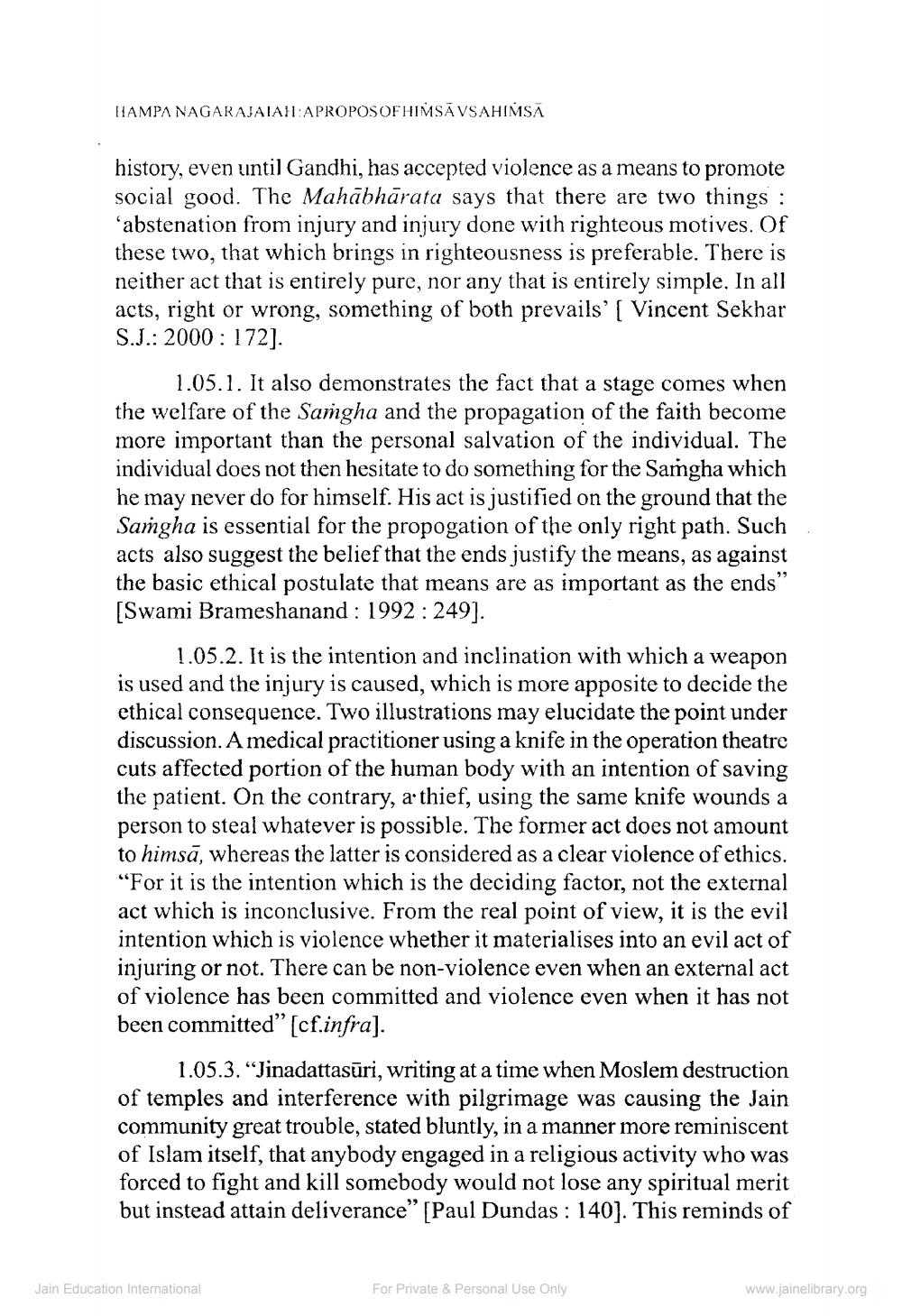Book Title: Jain Journal 2004 07 Author(s): Jain Bhawan Publication Publisher: Jain Bhawan Publication View full book textPage 8
________________ HAMPA NAGARAJATAH:APROPOSOFHIMSĀVSAHIMSA history, even until Gandhi, has accepted violence as a means to promote social good. The Mahābhārata says that there are two things : ‘abstenation from injury and injury done with righteous motives. Of these two, that which brings in righteousness is preferable. There is neither act that is entirely pure, nor any that is entirely simple. In all acts, right or wrong, something of both prevails' ( Vincent Sekhar S.J.: 2000: 172]. 1.05.1. It also demonstrates the fact that a stage comes when the welfare of the Samgha and the propagation of the faith become more important than the personal salvation of the individual. The individual does not then hesitate to do something for the Samgha which he may never do for himself. His act is justified on the ground that the Samgha is essential for the propogation of the only right path. Such acts also suggest the belief that the ends justify the means, as against the basic ethical postulate that means are as important as the ends" [Swami Brameshanand : 1992: 249]. 1.05.2. It is the intention and inclination with which a weapon is used and the injury is caused, which is more apposite to decide the ethical consequence. Two illustrations may elucidate the point under discussion. A medical practitioner using a knife in the operation theatre cuts affected portion of the human body with an intention of saving the patient. On the contrary, a thief, using the same knife wounds a person to steal whatever is possible. The former act does not amount to himsā, whereas the latter is considered as a clear violence of ethics. “For it is the intention which is the deciding factor, not the external act which is inconclusive. From the real point of view, it is the evil intention which is violence whether it materialises into an evil act of injuring or not. There can be non-violence even when an external act of violence has been committed and violence even when it has not been committed” (cf.infra). 1.05.3. "Jinadattasūri, writing at a time when Moslem destruction of temples and interference with pilgrimage was causing the Jain community great trouble, stated bluntly, in a manner more reminiscent of Islam itself, that anybody engaged in a religious activity who was forced to fight and kill somebody would not lose any spiritual merit but instead attain deliverance” [Paul Dundas : 140]. This reminds of Jain Education International For Private & Personal Use Only www.jainelibrary.orgPage Navigation
1 ... 6 7 8 9 10 11 12 13 14 15 16 17 18 19 20 21 22 23 24 25 26 27 28 29 30 31 32 33 34 35 36 37 38 39 40 41 42 43 44 45 46
